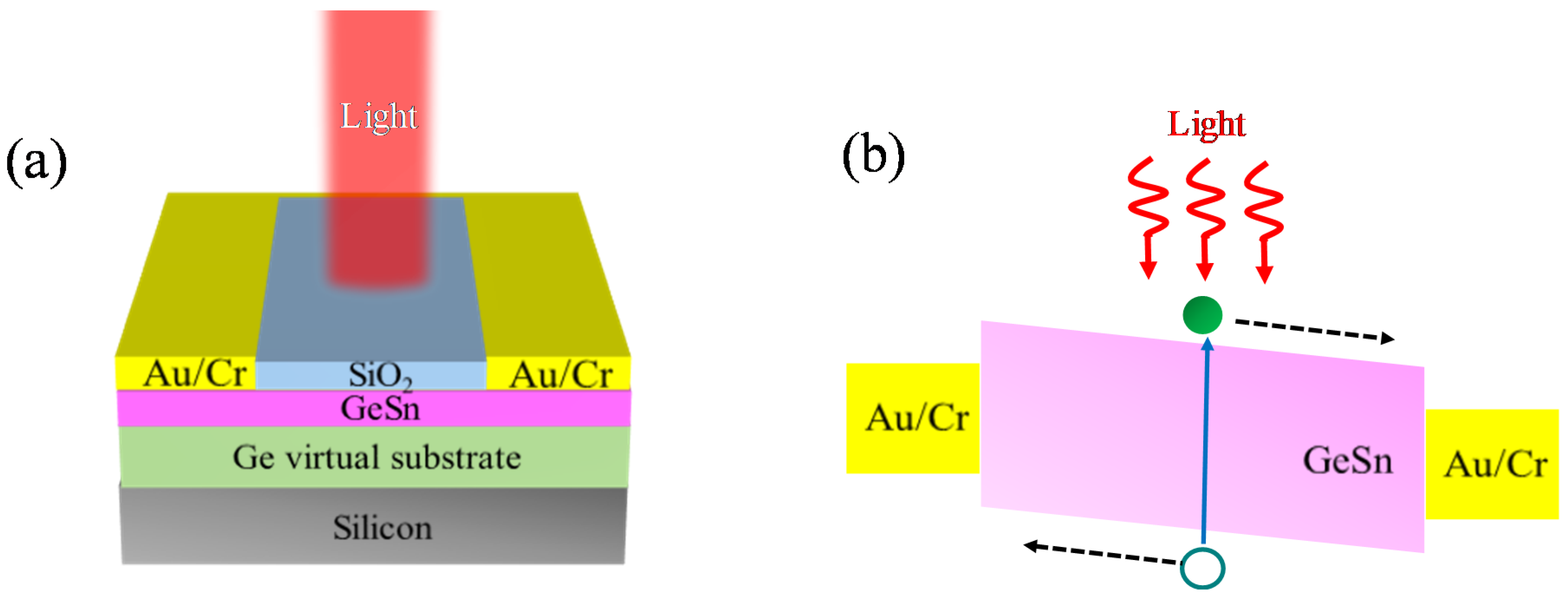Contents

Source: MDPI
Understanding Metal–Semiconductor–Metal Photodetectors
Introduction to MSM Photodetectors
Metal–Semiconductor–Metal (MSM) photodetectors are a type of photodetector device that employs two Schottky contacts, or metallic electrodes, on a semiconductor material. Unlike traditional p–n junction photodiodes, MSM photodetectors use a pair of Schottky junctions. When operational, an electric voltage is applied to these electrodes. Upon exposure to light, the semiconductor material situated between the electrodes generates electric carriers, such as electrons and holes, which are subsequently collected by the electric field, forming a photocurrent.
Design and Structure
MSM photodetectors typically feature an interdigitated electrode structure, where the distance between the electrodes can be as minimal as 1 micrometer. Alternatively, the electrodes can be arranged in a ring shape, covering a circular area. When light strikes the device from the electrode side, it is partially blocked, potentially reducing quantum efficiency unless the light is directed precisely between the electrodes. To enhance quantum efficiency, back-illuminated devices are employed, allowing light to enter from the opposite side, unobstructed by the electrodes. Another approach involves top illumination combined with extremely thin, partially transparent gold contacts. This method not only alleviates light blocking but also enhances detection bandwidth as carriers are generated closer to the contacts.
Advanced Configurations for High-Speed Applications
For applications requiring extremely high speeds, MSM photodetectors can be configured in a traveling-wave setup. In this configuration, light is guided through an optical waveguide containing the absorbing layer, with electrodes deposited on top, forming a coplanar waveguide line for the generated microwave signal. MSM detectors can achieve detection bandwidths in the hundreds of gigahertz, with impulse response functions narrower than 1 picosecond, making them highly suitable for very high-speed optical fiber communications.
Integration and Practical Applications
One of the practical advantages of MSM photodetectors is their relatively simple planar structure, which makes them ideal for monolithic integration with other components on photonic integrated circuits. This integration capability is particularly beneficial in the development of compact, efficient photonic devices for various technological applications.
Conclusion
MSM photodetectors offer a versatile and efficient solution for high-speed optical detection. Their ability to be integrated into photonic circuits, coupled with their high-speed capabilities, makes them an essential component in the field of optoelectronics and photonics, particularly in applications involving optical fiber communications.

Source: IntechOpen
Feel free to comment your thoughts.



